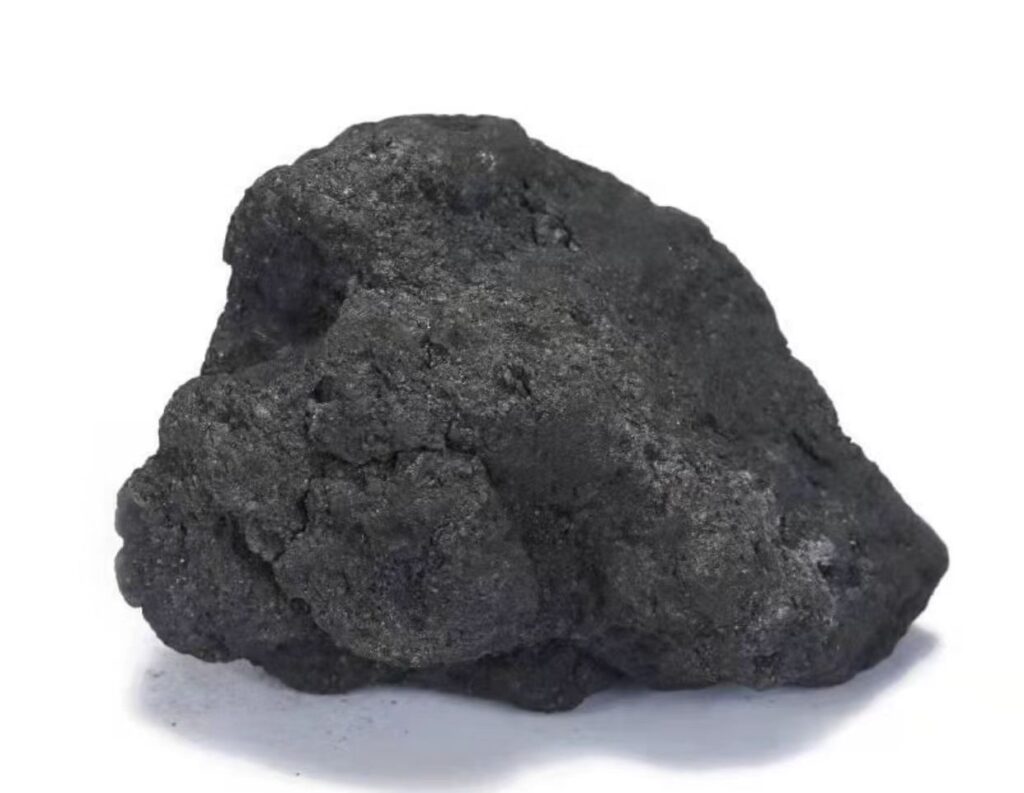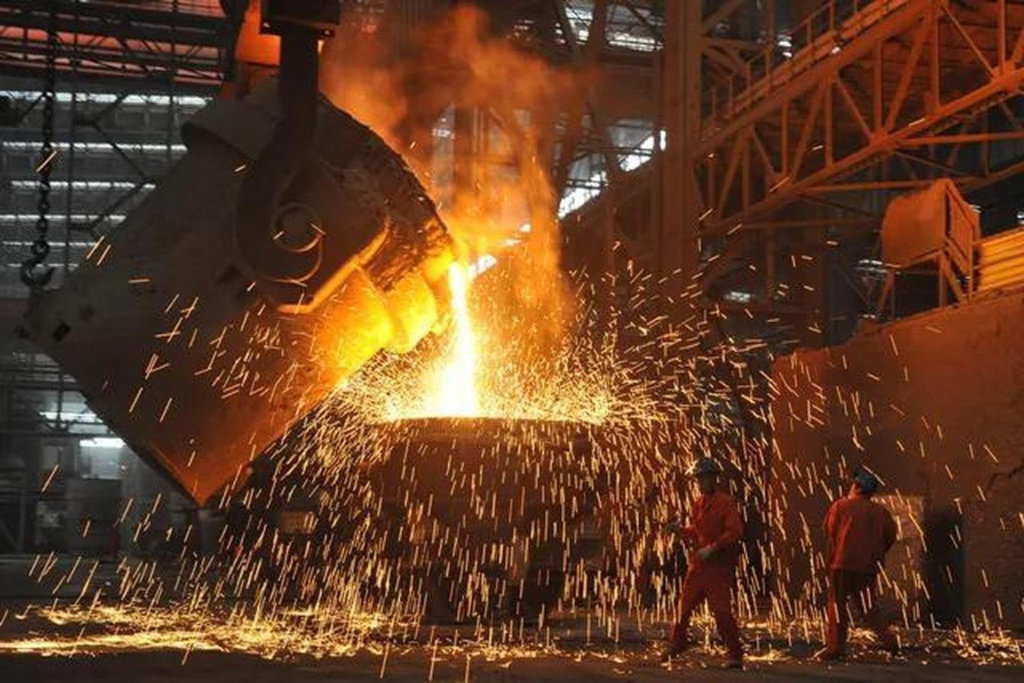Le graphite est une forme naturelle de carbone. Il est largement utilisé dans de nombreuses industries en raison de ses propriétés uniques et de sa capacité à conduire l'électricité. Dans ce blog, nous verrons pourquoi le graphite est un bon conducteur d'électricité, quels sont ses avantages et quelles sont les différentes applications possibles.
Table des matières
Toggle
Introduction
Le graphite est un allotrope du carbone composé d'atomes de carbone en réseau hexagonal. Il s'agit d'un minéral naturel présent dans de nombreuses régions du monde, notamment en Chine, en Inde et aux États-Unis. Le graphite est un minéral doux, noir et brillant, connu pour ses propriétés lubrifiantes et sa capacité à conduire l'électricité.
Le graphite est un matériau très polyvalent. Il est utilisé dans diverses industries, telles que eaf sidérurgieElle produit également certains types de produits, tels que des produits chimiques, des produits manufacturés et des produits électroniques. Elle produit également certains types de pilesLe graphite est également utilisé dans la fabrication de produits chimiques, de peintures et de lubrifiants. Le graphite permet également de fabriquer des matériaux ignifuges, tels que des retardateurs de flammes, des isolants et des agents ignifuges.
Le graphite est-il un bon conducteur d'électricité? ?
Oui. Grâce à sa structure moléculaire unique, le graphite possède une excellente conductivité électrique, ce qui en fait un excellent conducteur d'électricité. Cette propriété peut être attribuée à plusieurs facteurs, notamment les électrons de valence, les électrons individuels de chaque atome de carbone et la présence d'électrons libres dans le matériau.
Dans le graphite, les atomes de carbone sont disposés dans un réseau hexagonal avec de nombreux atomes de carbone présents. Chaque atome de carbone du réseau apporte quatre électrons de valence, les électrons impliqués dans la liaison. Ces électrons de valence participent aux liaisons covalentes solides, reliant les atomes de carbone pour former les anneaux hexagonaux.
Cependant, dans les couches de la structure du graphite, il y a aussi des électrons libres qui ne sont pas impliqués dans la liaison covalente et qui sont vaguement retenus par les atomes de carbone. Ces électrons libres sont mobiles et peuvent se déplacer librement dans les couches de la structure du graphite.
Par conséquent, le graphite présente une conductivité électrique élevée, car les électrons libres peuvent rapidement passer d'un atome de carbone à un autre, ce qui facilite la circulation efficace du courant électrique à travers le matériau.
Comment le graphite peut-il conduire l'électricité? ?
Le graphite peut conduire l'électricité grâce à un processus appelé "effet tunnel". Ce processus permet aux électrons de se déplacer entre les atomes de carbone dans le réseau du graphite sans contact direct. Les électrons peuvent "passer" à travers le réseau et se déplacer d'un bit à l'autre. Cela permet une transmission efficace de l'électricité à travers le réseau de graphite.
En outre, le graphite a une grande surface, ce qui permet une transmission efficace de l'électricité. En effet, la structure en treillis du graphite comporte de nombreux trous minuscules, qui permettent une information efficace de l'électricité. Le graphite est souvent utilisé dans des applications nécessitant une conductivité électrique élevée, telles que les batteries et les composants électriques.
Avantages de l'utilisation du graphite comme conducteur d'électricité
Tout d'abord, c'est un conducteur électrique efficace grâce à sa structure moléculaire, avec une résistance relativement faible, ce qui est plus propice au mouvement des électrons.
En outre, le graphite est résistant à la corrosion et à l'oxydation et ne réagit pas avec la plupart des produits chimiques ou des gaz. Il est inerte à basse température et ne s'oxyde pas avant 450°C. En même temps, il peut conduire efficacement la chaleur et a un point de fusion élevé. En tant que conducteur thermique efficace, il favorise le transfert rapide de la chaleur.
Enfin, graphite a une résistance mécanique à haute température. La résistance mécanique n'est pas élevée à température moyenne, mais elle augmente à mesure que la température augmente. Entre 2000 et 2500 degrés Celsius, la résistance mécanique est environ deux fois supérieure à celle de la température ambiante, et sa résistance est plus élevée que celle de n'importe quel autre matériau. Sa résistance est supérieure à celle de tout autre matériau, électrodes en graphite sont utilisés dans la fabrication de l'acier par four à arc électrique.
Applications
Le graphite est un matériau polyvalent doté de nombreuses propriétés uniques. L'homme utilise le graphite comme conducteur électrique depuis le XIXe siècle, et les conducteurs modernes en graphite sont aujourd'hui utilisés dans diverses applications. Le graphite est souvent utilisé dans l'industrie, par exemple pour la production d'électricité. électrodes en graphiteLes produits chimiques, les semi-conducteurs, les piles et les batteries sont des produits de consommation courante. piles à combustible. Il peut également être utilisé dans l'électronique grand public, comme les téléphones portables et les ordinateurs, ainsi que dans les véhicules électriques.
L'utilisation du graphite comme conducteur électrique est également bénéfique en termes d'efficacité énergétique. La faible résistance électrique du graphite signifie que moins d'énergie est perdue en chaleur, ce qui peut se traduire par une utilisation plus efficace de l'électricité. Cela peut avoir un impact significatif sur la réduction des coûts énergétiques et des émissions. Dans les applications industrielles, électrodes en graphite sont utilisés comme bons conducteurs dans les fours électriques à arc pour fondre l'acier, qui est la seule matière première conductrice actuellement disponible.
Conclusion
Le graphite est un bon conducteur d'électricité en raison de sa structure moléculaire unique et de sa grande surface. C'est un conducteur d'électricité très efficace qui résiste à la corrosion et à l'oxydation. Il est également léger et durable, ce qui le rend utile dans diverses applications.



